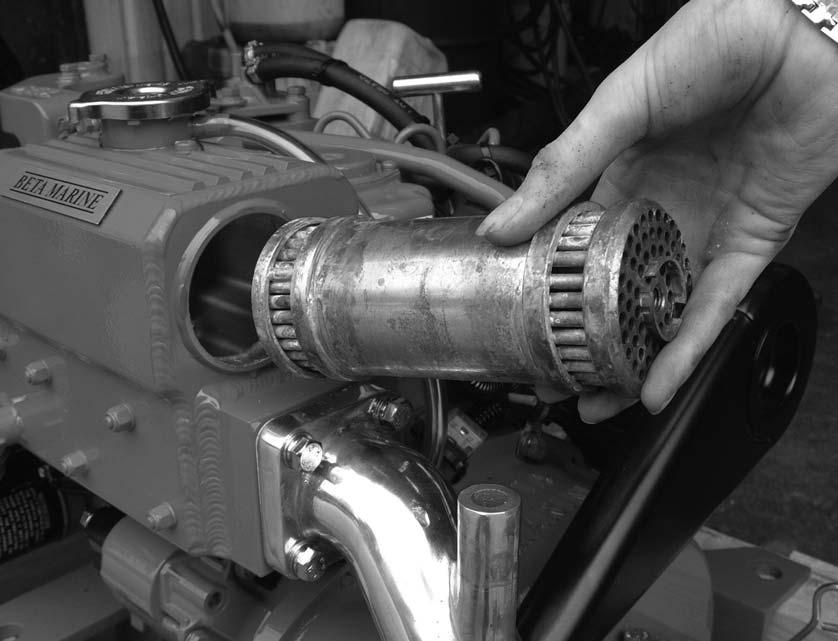
1 minute read
Sea water pump, heat exchanger
It is essential that a solution of fresh water and anti-freeze is used as engine coolant. The amount of anti-freeze must be between 33% to 50%. This not only stops ‘freezing up’ in winter, but it prevents overheating and corrosion.
The warranty is invalid unless the correct ratio is used. The concentration of ethylene must NOT exceed 50%.
The anti-freeze in the fresh water system enables the boiling point of water to rise to 124°C with a 13 psi pressure cap fitted.
The water temperature alarm switch will however be activated at 95°C to 100°C. If no anti-freeze or a very weak solution is used, then the water temperature switch may not be activated before coolant is lost.
Cleaning the heat exchanger tube stack and replacing ‘wasting zinc anode’
(1) The wasting zinc anode should be checked regularly at least every six months and replaced every year or sooner, as necessary. The anode is attached to the bolt inserted in the end cap of the heat exchanger. See photo 30. On most engines this is on the aft end. (2) Unscrew the bolt and replace the complete unit with a new one. (3)It is possible for fine sea weed and other debris to get past the inlet filter and into the tube stack. This should be removed and cleaned. See photo 31. (4) Drain off coolant into a bucket.
(5) Unscrew the 2 end cap retaining bolts (one each end of the tube stack). Remove the ‘O’ rings and pull out tube stack. Clean tube stack and end caps.
30 31
Zinc anode
Sea water pump and cooling system

(Heat exchanger-cooled engines) Caution: Before working on the sea water system ensure that the sea cock is in the off position.
1) It is very important that the correct sea water flow is maintained to cool the closed circuit system of the engine. The key component in this system is the sea water pump impeller. This should be checked every year by removing the circular plate. See photo 32. 2) Withdraw the rubber impeller from its drive shaft as shown. See photo 33. 3) Check impeller for cracks in the rubber, excessive wear or lost vanes. Replace with a new impeller as necessary.








